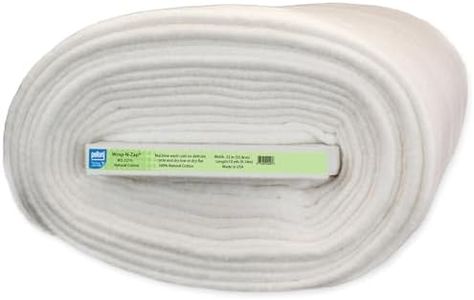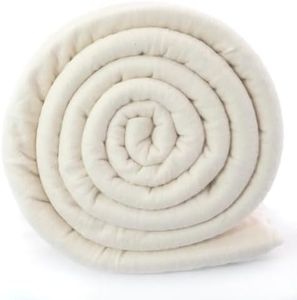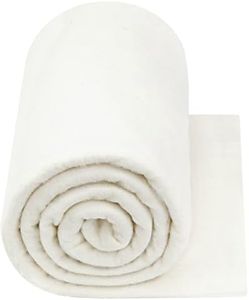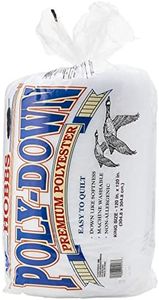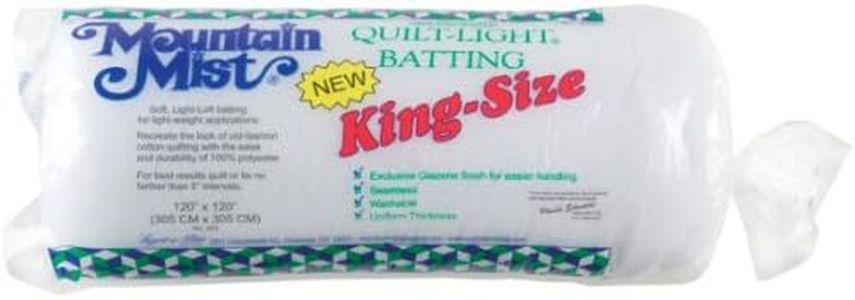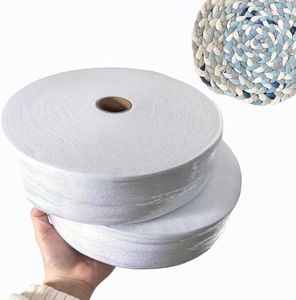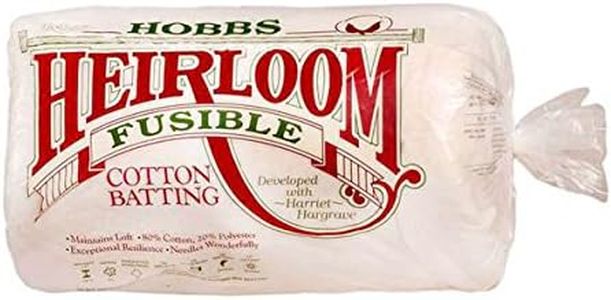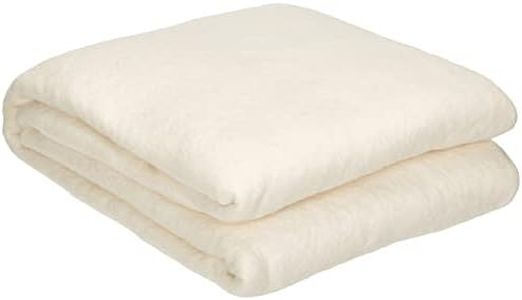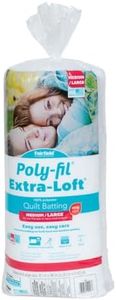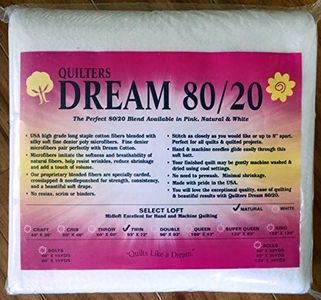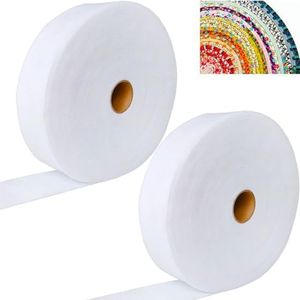We Use CookiesWe use cookies to enhance the security, performance,
functionality and for analytical and promotional activities. By continuing to browse this site you
are agreeing to our privacy policy
10 Best Quilting Batting
From leading brands and best sellers available on the web.Buying Guide for the Best Quilting Batting
Choosing the right quilting batting is essential for the finished look, feel, and function of your quilt. Batting is the layer between the quilt top and backing, adding warmth, weight, and texture. The selection depends on your desired quilt style, warmth, thickness, and whether you'll be machine or hand quilting. Understanding the key characteristics will help you pick a batting that best suits your project needs and quilting methods.Material TypeBatting comes in various materials such as cotton, polyester, blends, wool, and bamboo. Cotton batting is soft, breathable, and shrinks slightly for a classic look. Polyester is lightweight, doesn’t shrink, and holds its shape well, making it good for puffy quilts. Blends offer a balance, combining the best features of each fiber. Wool adds warmth and loft but can be more costly. Bamboo is soft and eco-friendly. Your intended quilt usage—whether for warmth, weight, or environmental reasons—helps determine which material suits you best.
Loft (Thickness)Loft refers to how thick or puffy the batting is. Low loft batts are thin, resulting in flatter quilts, which are easier to work with for detailed quilting or wall hangings. High loft batting creates a puffier look and more warmth, but can be harder to quilt, especially by hand. Choose low loft for more detailed stitching and high loft if you desire a chunkier, warmer quilt. Medium loft offers a compromise between ease of quilting and a plush feel.
Size and Pre-cut OptionsBatting is available in rolls, by the yard, or as pre-cut pieces to fit standard quilt sizes like crib, twin, full, queen, and king. Picking pre-cut batts can save time and reduce waste for standard-sized projects, while batting sold by roll or the yard offers flexibility for custom-sized quilts. Choose the size that closely matches or slightly exceeds your quilt top; you can always trim the excess.
Quilting DistanceThis refers to how far apart you can stitch and still keep the batt’s integrity. Some batts allow stitching up to 10 inches apart, while others require stitches as close as 2 inches. Wide spacing means the quilt feels softer and lighter, but batting must be secure enough to avoid bunching over time. If your quilting style is sparse, pick a batting rated for wide quilting distances. For dense quilting, most batts will work.
Washability and ShrinkageSome battings are pre-shrunk or have minimal shrinkage, while others may shrink and create a vintage, puckered look after washing. If you want your quilt to maintain its size and smoothness, opt for low-shrink batts. If a traditional puckered texture is desirable, a batting with some shrinkage can be suitable. Always consider whether your quilt will need frequent washing, like a baby quilt, and check if the batting is machine-washable and dryer safe.
Needle-Punched vs. BondedNeedle-punched batting is mechanically felted for strength and has a denser feel, making it suitable for machine quilting or projects needing more durability. Bonded batting is held together with an adhesive, resulting in a smoother, lighter batt, and is preferred for hand quilting or very soft quilts. Your quilting method and the desired quilt softness will help guide this choice.
